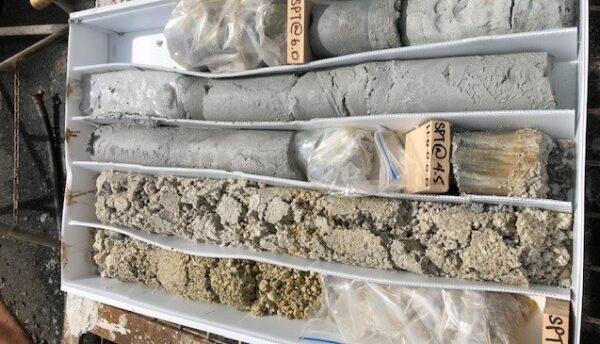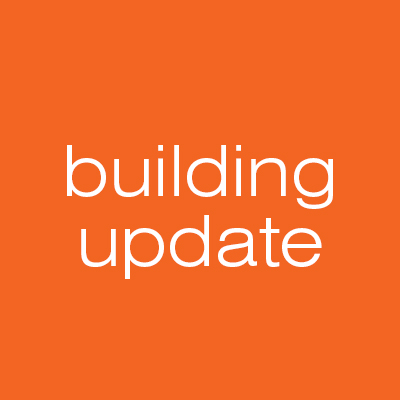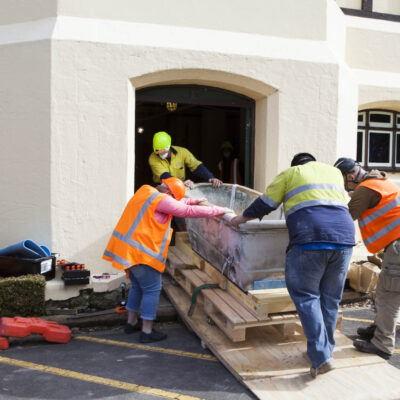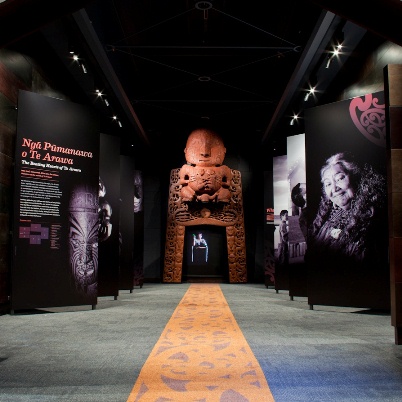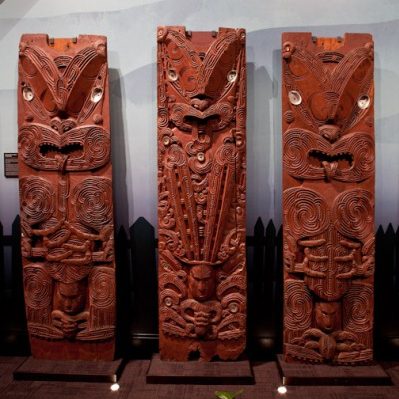Structural and Geo-Technical Investigations
The original building was constructed in 1906 for use as a bathhouse, with half-timber exterior framing, mortise and tenon joints in-filled with pumice concrete panels and a lath and plaster internal overlay.
Rotorua Bath House under construction
The original building comprises:
• A basement with unreinforced concrete columns which sit on shallow foundation pads
• Unreinforced concrete foundation walls
• A vaulted/arched unreinforced concrete ground floor
• Timber framed ground floor walls
• A trussed/rafter roof system with a heavy clay tile roof
• Unreinforced concrete walls up to 10.5m height are also located at the junctions between the differing building sections
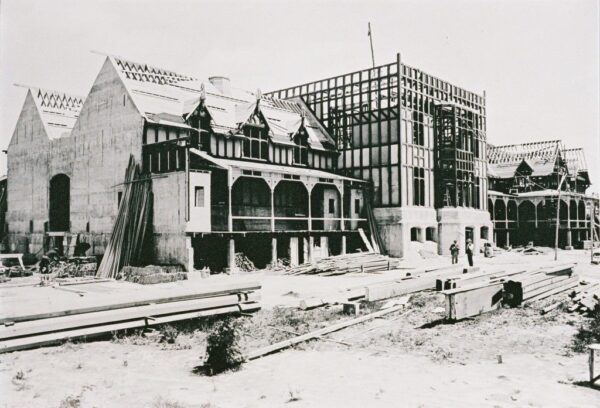
Numerous modifications and alterations have taken place since the original construction. These modifications have involved multiple construction types (reinforced concrete frames, steel frames, concrete overlay, timber frames etc.), meaning the building is considered extremely complex when trying to calculate its seismic capacity.
Testing and Investigations
Structural engineers conducted a range of tests and investigations including a limited site survey, destructive testing, concrete scanning and investigation of selected structural elements. They also reviewed all existing files on the building’s construction.
When the building was originally constructed it would have been designed to the applicable standards of the time. Back then there was no provision for earthquake loading. Since the original construction these standards have been revised many times.
Specialist engineers were engaged to provide geotechnical reporting for the Museum. The site has been classified as a subsoil class ‘D’ with minimal liquefaction potential.
Core samples of ground under Rotorua Museum
The surrounding area is characterised by geothermal activity. The environment has caused extensive corrosion to nailed connections and degradation to the unreinforced concrete structure.
However, in general terms, no geotechnical or natural hazards were identified by the geotchnical engineers which significantly affect the seismic rating of the building.
